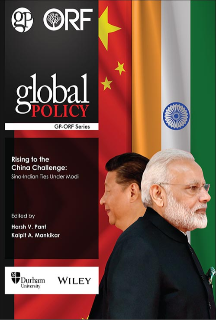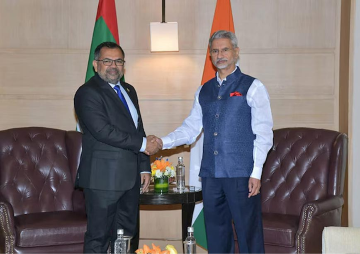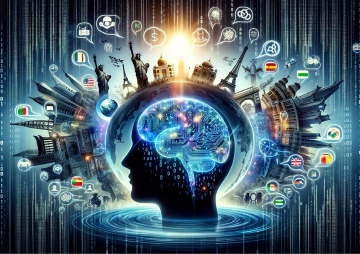Introduction
Harsh V. Pant and Kalpit A. Mankikar
As two critical nodes in the Asian power structure, India and China have had a complex relationship characterised by phases of cooperation and competition. There has been a convergence of interests between the two countries with respect to issues like climate change, global trade, and the reform of international financial institutions, among others. With both nations rising in the inter-state hierarchy, contestation has become a more visible feature of their bilateral relationship. It is increasingly present in geographies such as the Indian Ocean and South Asia, where China is eager to spread its influence. It can be seen in the Chinese pushback against India at global multilateral bodies. However, the most significant facet is the periodic tension on account of the unsettled border and China’s expansive territorial claims within India, which makes it central to the latter’s security and foreign policy calculus.
Despite a festering boundary dispute between India and China for more than seven decades and a war in 1962, the border has been relatively peaceful. But China, on the ascendant under President Xi Jinping, thought it fit to revisit territorial wrangles, resulting in the Indian Army and the People’s Liberation Army (PLA) being involved in a tense standoff in the Doklam trijunction in Bhutan.
To dial down tensions and engage with China, Indian Prime Minister Narendra Modi interacted with Xi on numerous occasions between 2014 and 2019. During his very first trip to China as prime minister in May 2015, Modi had underscored that the India-China bilateral engagement should be one of equals, with the joint statement reading that both nations had re-emerged as major powers in the region and underlining that if the two countries “have to realise the extraordinary potential of our relationship, we must also address the issues that lead to hesitation and doubts, even distrust, in our relationship” (1). This approach of engaging China as an equal was in contrast to the earlier construct of ‘China first, India second,’ as evidenced by India’s stand when the US offered it a permanent seat in the UN Security Council (2). Hope was in the air with the 2018 Wuhan summit, which saw the top leadership of both nations installing guardrails to avoid military confrontation. Modi hosted Xi at Mamallapuram in 2019 and conferred about trade and boosting manufacturing capabilities. But barely months later, China unilaterally altered course and tried to change the status quo at the line of actual control (LAC), resulting in the deaths of Indian and Chinese servicemen in Galwan Valley.
The confrontation in June 2020 was an important turning point in relations between the two powers. Nearly four years since the confrontation, the standoff between the two nations continues, with Indian Foreign Minister S. Jaishankar categorising relations between the two nations as “abnormal” (3). Indian Defence Minister Rajnath Singh has termed China’s unilateral action along the LAC as having violated the basis of relations between the two nations (4). Within a short span of time, relations between India and China swung from engagement to escalation. The violent confrontation of June 2020 and subsequent efforts by China to alter the status quo along the LAC have led to the Modi government robustly combatting China on several fronts: military, diplomatic, and even economic. Delhi has upgraded the human resources, firepower, intelligence, and reconnaissance capabilities of the defence forces. Plans are afoot to upgrade the border infrastructure, both civilian and military. India is upping its game in manufacturing to reduce its dependence on China, and is zeroing on new trade partners.
This volume examines the broad trend lines in the India-China dynamics under the Modi government. Arvind Gupta sets the tone for this series with his analysis of the structural factors responsible for this state-of-affairs between the two Asian powers. Ambassador Ashok Kantha plots the course of how Delhi’s approach to Beijing evolved in the Modi 1.0 and 2.0 dispensations.
Since the Galwan clashes of 2020, there has been a dramatic change in the approach towards China from romanticism to realism. Thus, with national security considerations at the fore, Lt. Gen. S.L. Narasimhan examines China’s efforts to build infrastructure along the border to bolster its military capability. He also charts how India, which started the infrastructure development much later than China, is fast catching up despite the drawbacks of terrain. Yogesh Joshi charts the march of how the Indian Army is overhauling its capability to take on the PLA after the confrontation in 2020. Atul Kumar examines the emerging contours of India's defence diplomacy in response to China’s growing military footprint in India’s periphery and beyond.
Jayadeva Ranade tracks China’s advances in cyberspace and communications technology and decodes its civil-military tech ecosystem, which promotes the participation of private companies and entrepreneurs, universities and the PLA. He details measures by the Modi government to curb Chinese malware in Indian knowledge and technology systems.
The contestation with China is not just confined to the icy Himalayan heights but also to the vast expanse of the Indian Ocean, with naval and undersea activities emerging as a challenge to New Delhi’s primacy in South Asia. Abhijit Singh and Pooja Bhatt delve into the depths of China’s ambitions in the Indian Ocean and its naval modernisation programme. In turn, the duo analyses how the Indian Navy is stepping up to the China challenge and how India aspires to be a security provider on the high seas, zipping with important trade lanes. Building on this, Aditya Gowdara Shivamurthy and Sriparna Pathak decipher the Modi government’s ‘Neighbourhood First’ policy, and how connectivity has become the new catchword to build bridges with nations in South Asia where China has made inroads.
In his book Why Bharat Matters, Jaishankar posits that the shadow of the border clashes has led the Indian establishment to approach China from a more integrated perspective, encompassing issues like investment, commerce, technology, and civil society interaction (5). The 2020 Galwan clash brought forth a new realisation that the enemy camping at the gates is the world’s second-largest economy, a technological and manufacturing powerhouse with formidable military muscle. For long, India’s intelligentsia and policymakers believed that both nations should let their resource monopolies thrive—meaning China’s destiny lay in manufacturing and India’s in services. Bibek Debroy and Aditya Sinha argue how Modi has upended this dogma to lay the foundation for India’s manufacturing capabilities, reduce the overdependence on Chinese imports, and, importantly, pivot to reliable economic partners. Sana Hashmi writes on how India is aligning closely with global initiatives that seek to protect supply chains in critical minerals at a time when China is leveraging its dominance in the field.
Both China and India are modern nations with a rich historical past. This civilisational salience, long suppressed, has now found new propulsion. Kalpit A. Mankikar charts the increasing resonance in China under Xi over the concept of a ‘civilisation state’, while Modi is popularising an important civilisational principle of ‘Vasudhaiva Kutumbakam’ (the world is one family) to offer a credible counterpoint to China.
The current epoch has been billed as an ‘Asian Century’ on account of the power balance shifting from the West to the East. In this transformation, China’s rise in the 21st century was an important factor, and there were optimistic predictions that it would overtake the US. But a black swan event like the pandemic, China’s demographic setback, and Sino-US tussles have cast a shadow on its rising economic trajectory. Simultaneously, there are also signs of an ‘India Moment’. Is it the end of the Chinese growth miracle? Can India seize this moment? Most importantly, how the two Asian giants manage their relationship will hold answers on the architecture of the new world order.
Harsh V. Pant and Kalpit A. Mankikar
Endnotes
(1) Ministry of External Affairs, Government of India,
(2) “There was a time when Nehru said 'India second, China first': S Jaishankar,” India Today, April 3, 2024.
(3) Ministry of External Affairs, Government of India.
(4) Press Information Bureau, Government of India.
(5) S. Jaishankar, Why Bharat Matters (Rupa, 2024), pp 133.
The views expressed above belong to the author(s). ORF research and analyses now available on Telegram! Click here to access our curated content — blogs, longforms and interviews.

 PDF Download
PDF Download



 PREV
PREV



